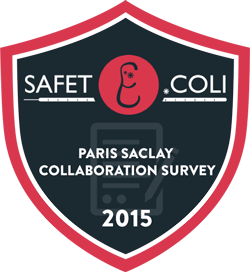Team:TU Eindhoven/Collaborations/Collaboration Attributions

Collaboration Attributions
Amoy Newsletter
This year, we have taken part in the biweekly newsletter hosted by iGEM Amoy, iGEM Paris Bettencourt and iGEM Pasteur. The newsletter presents projects of participating iGEM teams and focuses on topics interesting for Synthetic Biology. So far, special themes of the newsletter have been the controversial use of CRISPR to modify human embryos, software programs and the state of SynBio in many different countries. Check them out below!
-
Amoy newsletter issue 1 - How to set up and operate an iGEM team.

-
Amoy newsletter issue 2 - Project introductions and ethical discussions.

-
Amoy newsletter issue 3 - Show our projects.

-
Amoy newsletter issue 4 (special) - The development of synthetic biology in different countries.

-
Amoy newsletter issue 5 - Project update and three new parts.

-
Amoy newsletter issue 6 - Special Issue: Software.

PenPal
Team William and Mary has set up a PenPal application where different teams with the same interested were linked to each other. Our team was matched with Concordia as we were both working with membrane proteins. Through this PenPal match we have reached out to them and a brief discussion about both our projects has been taking place.
H2O
During the project we received an e-mail from iGEM team York. They were performing an investigation on the drinking water across different countries in the world. They wanted to determine the phosphate levels in water in different countries. To help them two different samples of 50ml H2O were taken. One sample was drawn from a kitchen water tap, the other was taken from a water tap outside. The pH of these samples was determined with the use of a pH meter. After the pH was taken they were filtered and send to York. Curious about their results? Check it our here .
Interview
Team NAIT_Edmonton has started a collaboration with teams from the track New Application. The purpose of their collaboration was to enquire teams on their process during this iGEM competition. They tried to investigate what problems teams ran into and how these problems were solved. To help them in their research we have agreed to do a skype interview. During this interview we discussed both ours and their project and how we have overcome some troubles. Curious about their results? Check it our here.
Miscellaneous

This beautiful badge was awarded to us after we filled in Paris-Saclay's survey.
 Home
Home Team
Team Project
Project Results
Results Modeling
Modeling Policy Practices
Policy Practices Collaborations
Collaborations Sponsors
Sponsors Safety
Safety












